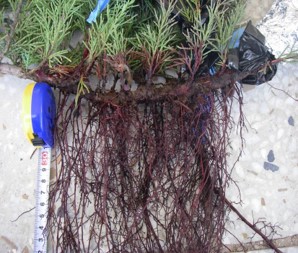Example
Water use characteristics and ecosystem rehabilitation effects of woody species for revegetation in arid regions of China
Background
In various regions of the earth, the increase of human activity and environmental load has led to the disruption of the natural environment and the ecosystem degradation. In particular, the ecosystems of arid regions were established under low levels of annual rainfall and the rehabilitation of this ecosystem is difficult and slow following disruption. Therefore, in order to maintain a sustainable ecosystem, it is important to construct measures that take into consideration the carrying capacity in terms of water resources.
Outline
We are promoting the investigation of woody species for revegetation with low water consumption and suitable for water balance, by clarifying the water use characteristics of species widely distributed in arid regions. The evergreen conifer Juniperus sabina, which is widely distributed in the arid regions of China, is considered to effectively prevent sand movement because of its morphological features such as a prostrate evergreen shrub. In addition, our previous studies have suggested that J. sabina has unique water use characteristics (water redistribution) that provide an alleviation soil surface drying under the progression of drying after rainfall. The characteristics are expected to have positive effects not only on their own water use but also on the establishment and growth of other species. Therefore, we are evaluating and examining the effects of covering by this species on the structure and diversity of plant communities in dryland ecosystems and the possibility in rehabilitation of dryland ecosystems.


Representative
